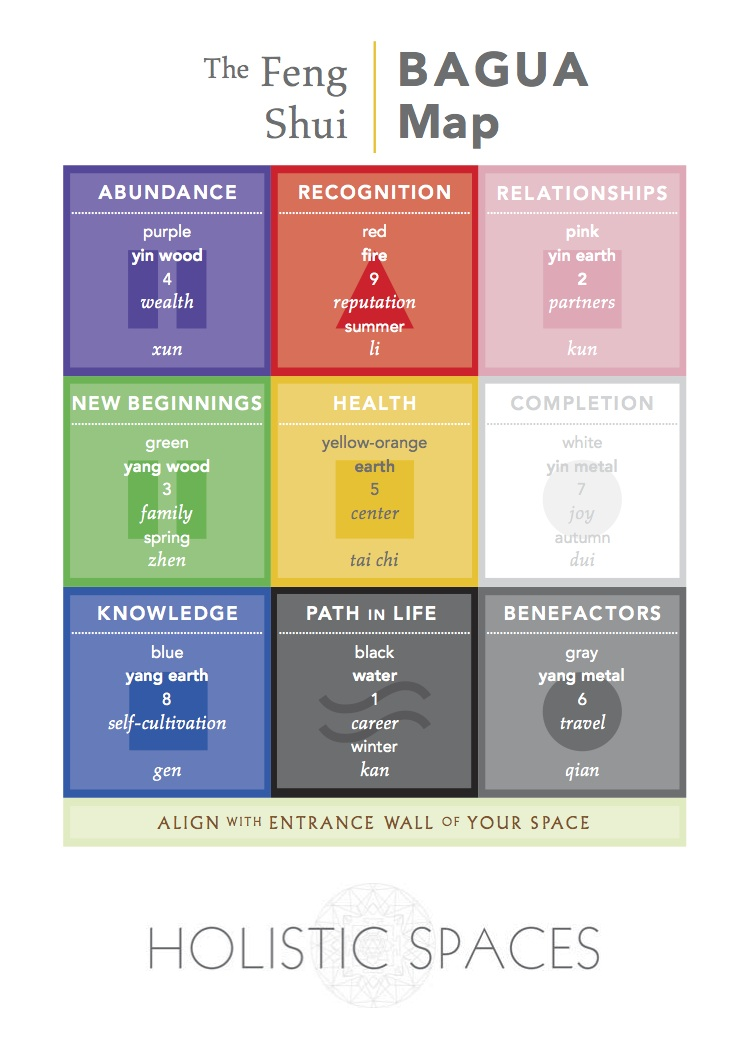Photo by Ruthie on Unsplash
How do I lay the bagua in the Southern Hemisphere?
In feng shui, there is an energy map called the bagua. There are different ways of depicting the bagua map, but really it’s a mandala, with eight areas around a center. My Holistic Spaces bagua map shown below is stylized into a three-by-three grid. You might also see images of the bagua that are pie-shaped.
There are different associations with each bagua area, so most people who are interested in feng shui would know that there’s a wealth area, a relationship area, a career area, and so on. As you go deeper, you start to learn the nuances of each area. There is also an element associated with each area of the bagua, as well as a shape, season, color, and direction. Kan position, for example, is connected to the north direction.
If you’re using the BTB method of laying the bagua map, you always lay it based on the energy and how the energy enters the space. You lay the Kan line of the bagua on the formal front door. If you’re using a different school of feng shui that uses the magnetic compass directions, like the Compass, Classical, of Flying Star school, you lay the bagua according to the geographic north direction. This doesn’t change if you’re in the Northern Hemisphere or the Southern Hemisphere - north is still north.
If you are interested in feng shui, find the school that you resonate with. If you follow me, that would be the BTB school. Based on BTB feng shui, you lay the bagua map based on the front door, where the energy is coming in. It has to do with how the qi is flowing, so it doesn’t really matter which hemisphere you’re in.
If you’d like to learn more about feng shui, check out Mindful Design Feng Shui School at: www.mindfuldesignschool.com






